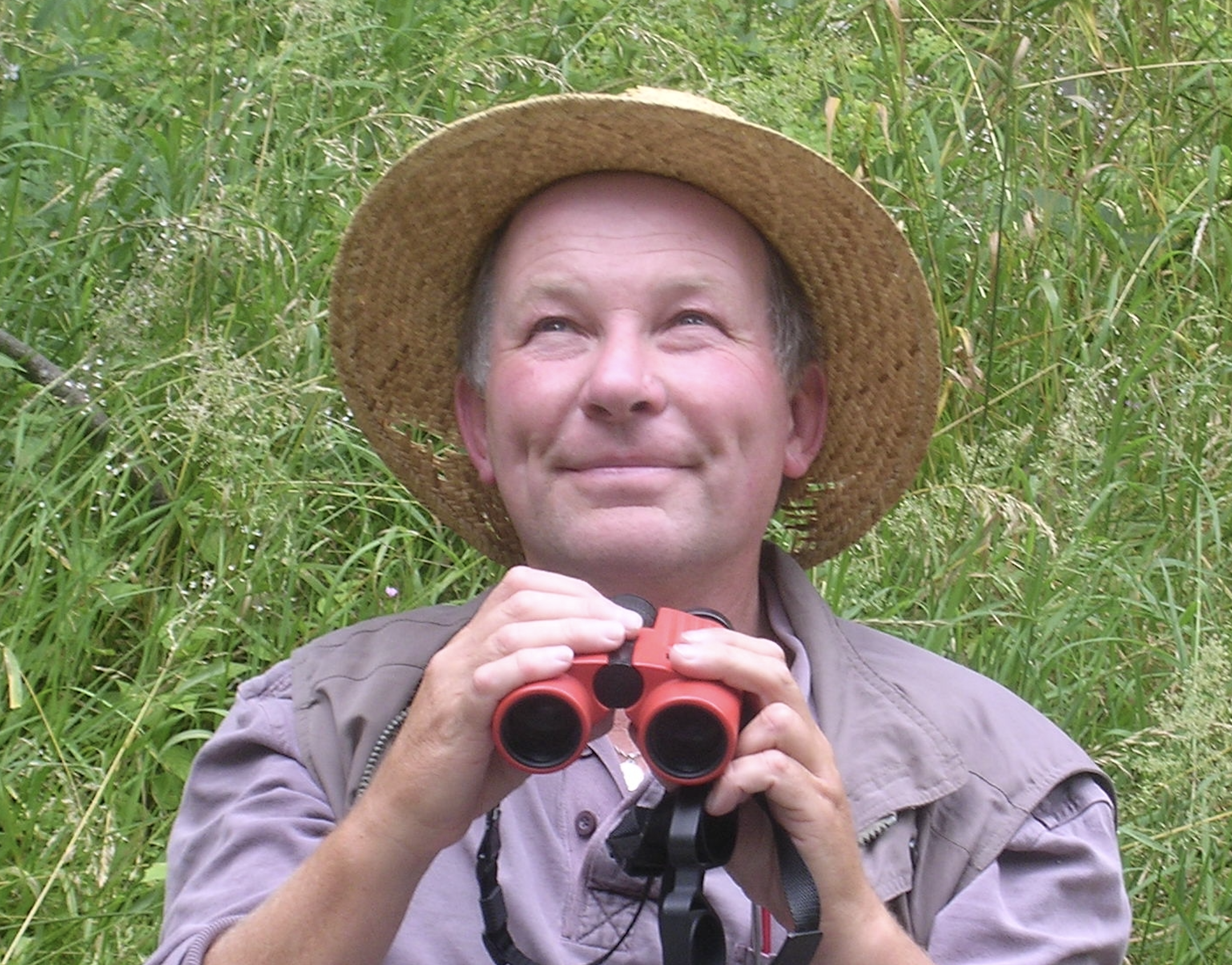It is hard to determine where the South Downs start, but they end dramatically and conclusively, plunging into the English Channel at Beachy Head, immediately east of the Seven Sisters, near Eastbourne.
Like the North Downs of Kent and Surrey, they consist of a steep scarp slope and a long, more gentle dip slope. In the South Downs, the escarpment faces north, which renders the turf cool and mossy, while the dip slope ambles away southwards, towards the English Channel, and is dissected by deep and hidden dry valleys, known as combes. Much of this gently sloping land consists of vast arable fields, open plough-land in winter.
Four swollen brown rivers cut through and divide up the South Downs – the Arun, Adur, Ouse and Cuckmere. Each of the resultant sections of downland is distinctive, but the greatest landscape character difference lies between the western downs, of Hampshire and West Sussex, which are often steep, incised and wooded, and those of East Sussex, which are open and rolling.
Hamlets and houses of the South Downs
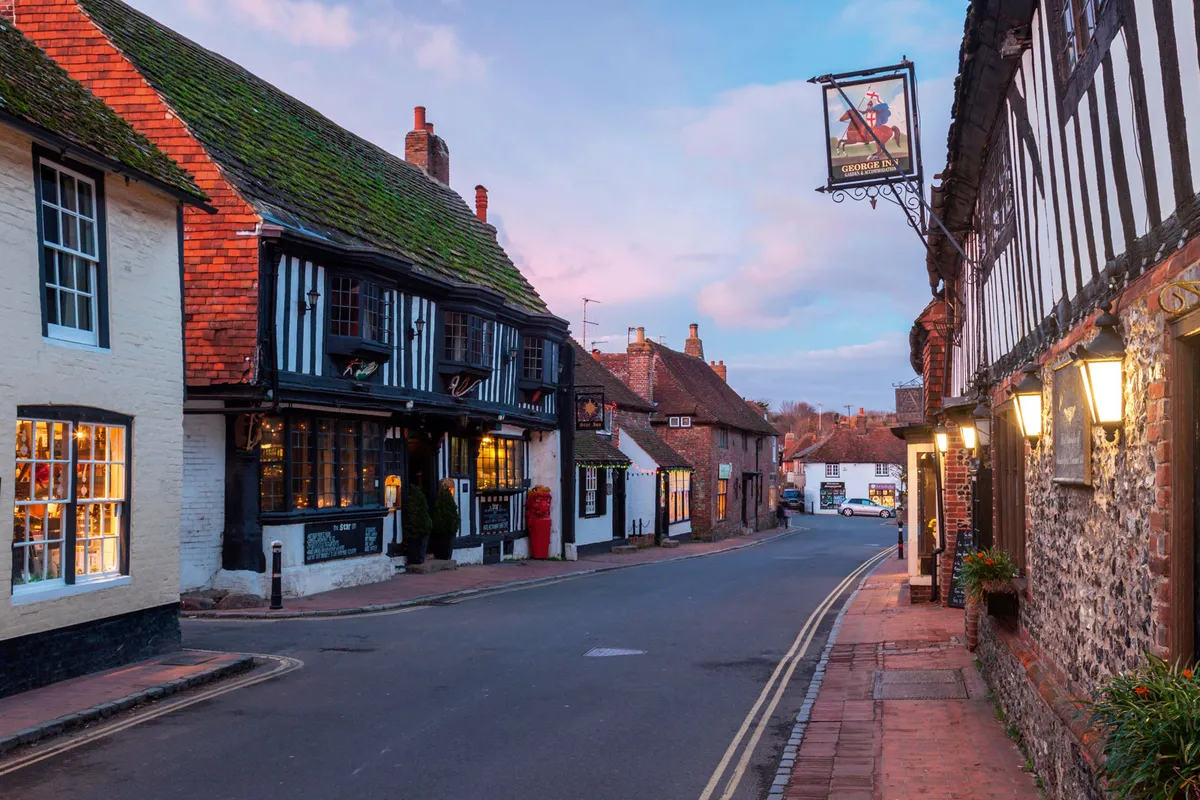
The built environment is as strong an element of the South Downs as the natural and farmed environments, and one which the establishment of the South Downs National Park Authority in 2010 will help to conserve. Local distinctiveness is profound here, from the villages that have sprung up around the clear streams that bubble up where chalk meets the gault clay at the foot of the downs’ escarpment, to those snuggled away in hidden valleys, or the hillside hamlets miles from anywhere.
Thatched cottages proliferate, but the South Downs are more famous for houses hung with pantiles, beneath which pipistrelle bats roost, and for walls of dwellings and farm buildings faced with flints, intact or halved (knapped). Timber-framed houses, though, are not as prominent here as in the remainder of Sussex.
Village life is massive, and the villages themselves make you want to dawdle there forever. Especially so the settlements of South Harting, Heyshott and Fulking in West Sussex, or Rodmell, Glynde and Alfriston in East Sussex, all of which lie on the spring-line, where streams emerge at the foot of the downland chalk escarpments.
Great houses are a feature of the downland landscape and many are open to the public, such as the Elizabethan Parham House near Cootham. Vernacular buildings are everywhere, including the timber-framed and thatched Alfriston Clergy House in the Cuckmere valley. There are also numerous vernacular farm buildings, such as Saddlescombe Farm at the foot of Newtimber Hill. The downs hold a large number of quaint churches, many flint-faced; some are hidden, awaiting discovery; some stand proud in the landscape, most notably the vast Gothic Revival chapel at Lancing College, which dominates the Adur gap.
Winter on the South Downs
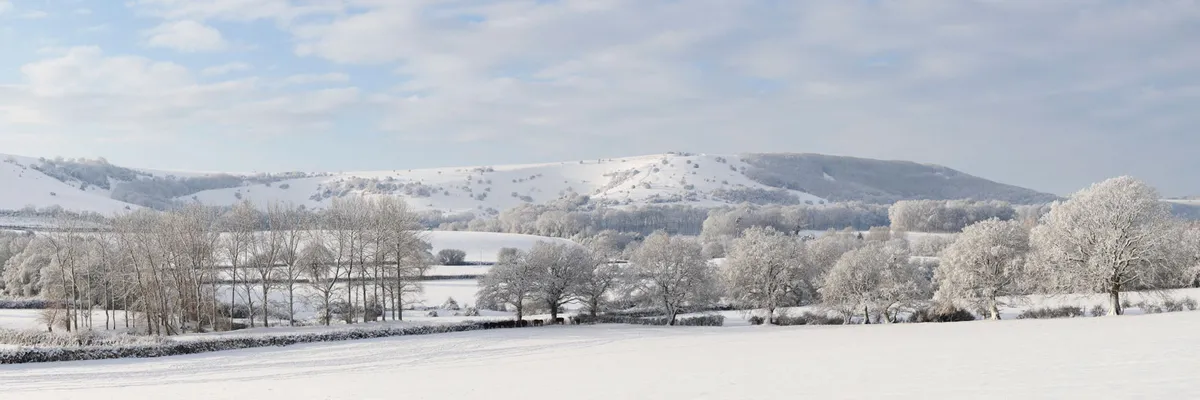
Winter on the South Downs is seldom bitter or snowbound, at least not in this modern era; yet frost can linger daylong in the shadowlands, along woodland edges and at the foot of steep north-facing slopes, where the low-slung January sun never reaches. Mostly, in winter, there is a dankness about the western downs: on rainy days, mists and vapours swirl over wooded slopes, or waver from treed promontories like montane banner clouds.
In wet weather, footpath surfaces are treacherous for the far south: a claggy clay marl sucks at every footstep as you labour upslope, while downslope involves much slipping and sliding. Even the bare chalk, when wet, can be surprisingly slippery, for it has been polished by countless walkers. You need good boots, sound knees and a strong stick. By contrast, summer is a time of kicking dust along the well-loved labyrinthine white chalk footpaths that make the South Downs so wondrously attractive to walkers, mountain bikers and horse riders.
Even in late January, there are signs of spring all along these downs. Moss grows verdantly up the boles of ash and beech trees, pieces break away randomly in winter gales to behave like tumbleweed. Dog’s mercury, wild arum leaves and bluebell spikes appear through the decaying leaf litter of yesteryear, while the dip slope woods are tinged with the summer-green of honeysuckle leaves.
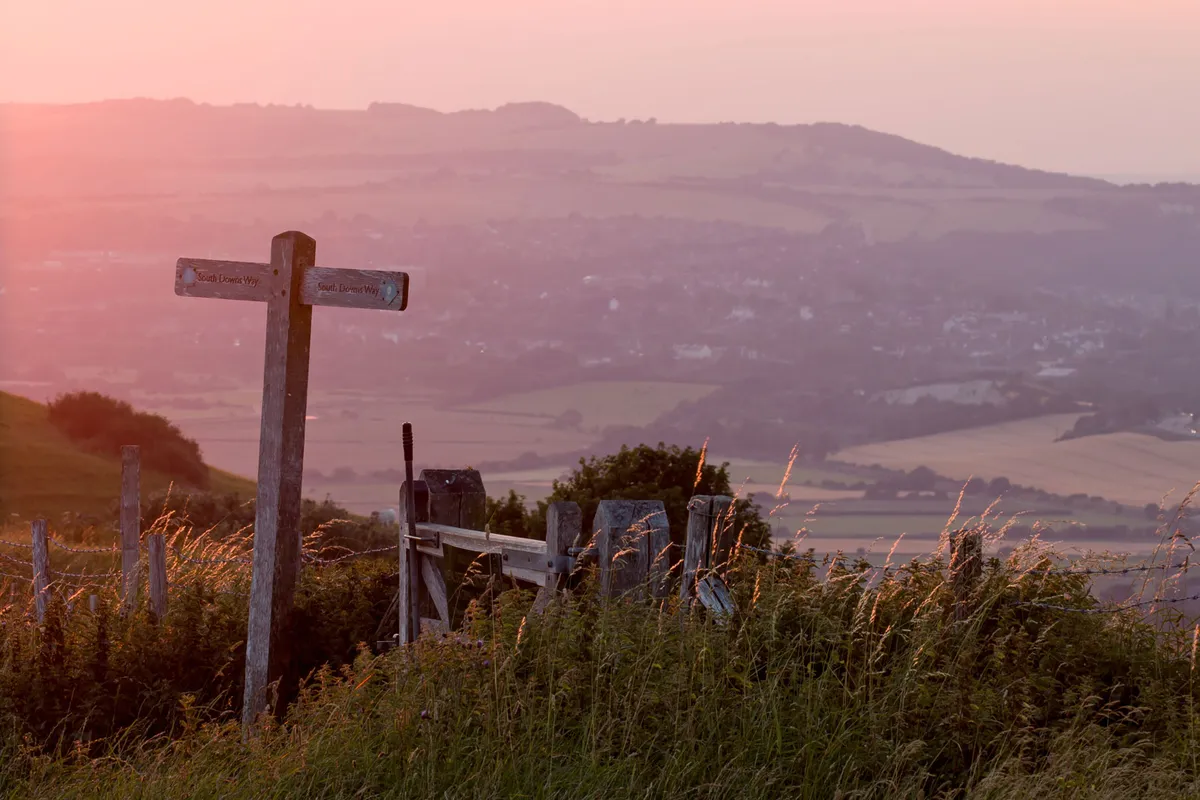
By mid-February, primroses are opening along sheltered sunny woodland banks, the cock mistle thrush is championing spring and the rooks are building high in wavering ash tops. Even in the towns there are early signs of spring, for the tops of Brighton’s healthy, disease-free elm trees flush purple with flower buds. Winter cannot hold spring back for long down here, deep in the south country.
Silence at dusk
The South Downs offer wondrous days out under the blue skies of a winter anticyclone, and dreamscape vistas across the oaken lands of the Low and High Weald. However, they are at their best in winter in the gloaming, at the end of those silent days of absolute calm that summer cannot produce. Then, when the dog-walkers have gone home, and the hum of distant traffic abates, and silence becomes audible; then, with redwing and fieldfare flocks descending to roost in the thickets; then, with vixen calls and a hint of wood-smoke in the air, you can feel the true depth of experience that the South Downs offers, and which captivated the great landscape and nature writers who knew and loved these downs, WH Hudson and Edward Thomas. Then, you can join the sleeping, dreaming trees, and start to dream up spring.
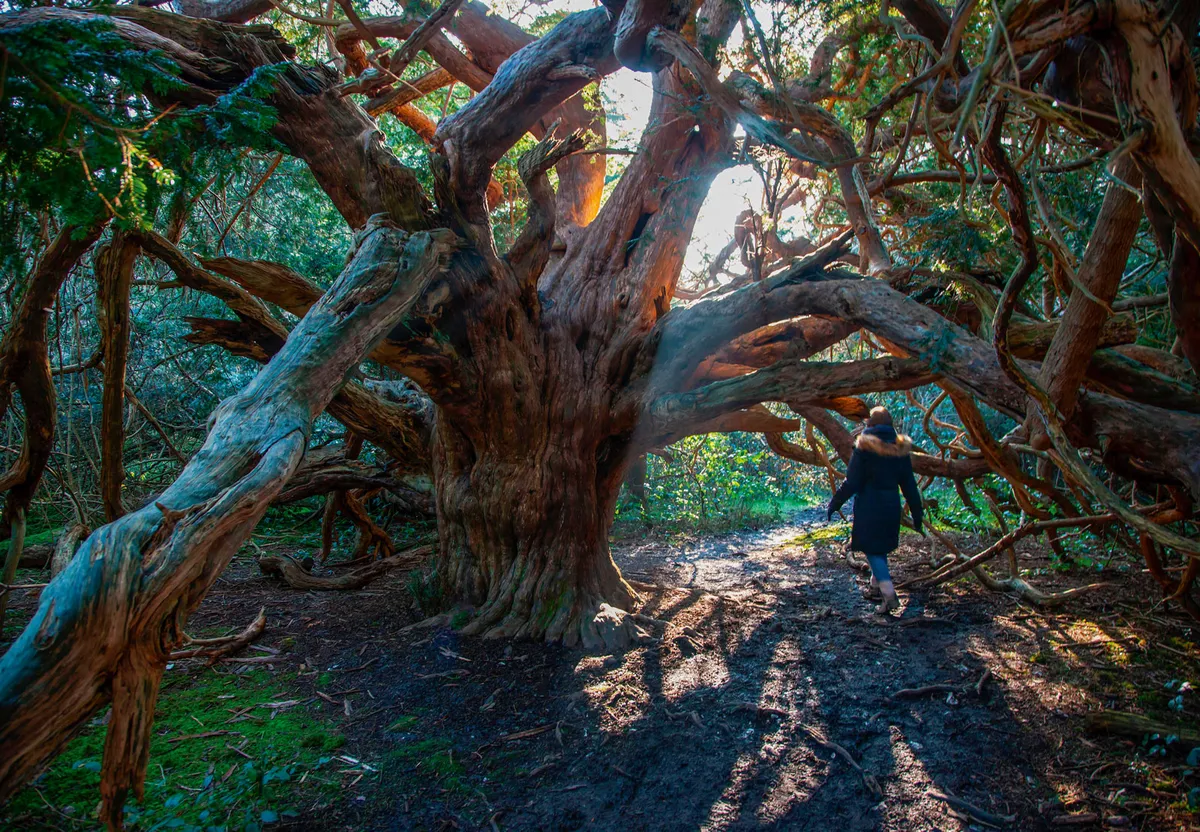
You have to be brave, though, to wander the ancient twisted yew woods of Kingley Vale in the half-light. The ghosts of Viking warriors are said to walk abroad there at night, and twisted roots rise to trip you: time and space become distorted. This place is a world apart, outside our experience, and not for the fainthearted. Chanctonbury Ring, further east along
the downland crest, is reputedly one of the most haunted places in Britain. After dark it is downright elemental.
Preserving the land
The downs are a changeling landscape, in the process of mending after the single-minded exploitation of 20th-century agriculture. Many of the old estates that own huge swathes of downland landscape, and whose owners love Sussex deeply, are working to restore the downland heritage. This is not simple, as much of the dip slope is high quality agricultural land, under barley, wheat and oil-seed rape.
On the downs around Burpham, for example, on the Duke of Norfolk’s estate, hedges and conservation headlands have been established, and winter stubbles are retained. This is to the benefit of grey partridge and other farmland birds such as corn buntings, linnets, skylarks and yellowhammers, and winter raptors, notably the short-eared owl.
On winter weekends, the western downs send plumes of blue wood-smoke skywards, where scrub is steadily being cleared to restore the precious chalk grassland. Volunteers from Butterfly Conservation, the South Downs Volunteer Ranger Service, the Murray Downland Trust and the Graffham Down Trust are active along the downland escarpment south of Midhurst. This work has enabled the Duke of Burgundy butterfly, recently endangered in Sussex, to re-establish a major dukedom here. Further east, the National Trust clears scrub along the Fulking escarpment and the flower-rich slopes of the Devil’s Dyke and Newtimber Hill, behind Brighton.
Similar work also benefits the huge archaeological interest that exists along the downs, centred on the Neolithic hillforts. These features are also threatened by the scrub that developed extensively after the rabbit populations collapsed from myxomatosis and the centuries-old system of sheep grazing declined. The Devil’s Jumps barrows at Treyford, Kingley Vale barrows and the flint mine landscape of Cissbury Ring are especially important archaeological sites, of national or even international significance.
Vistas and healing
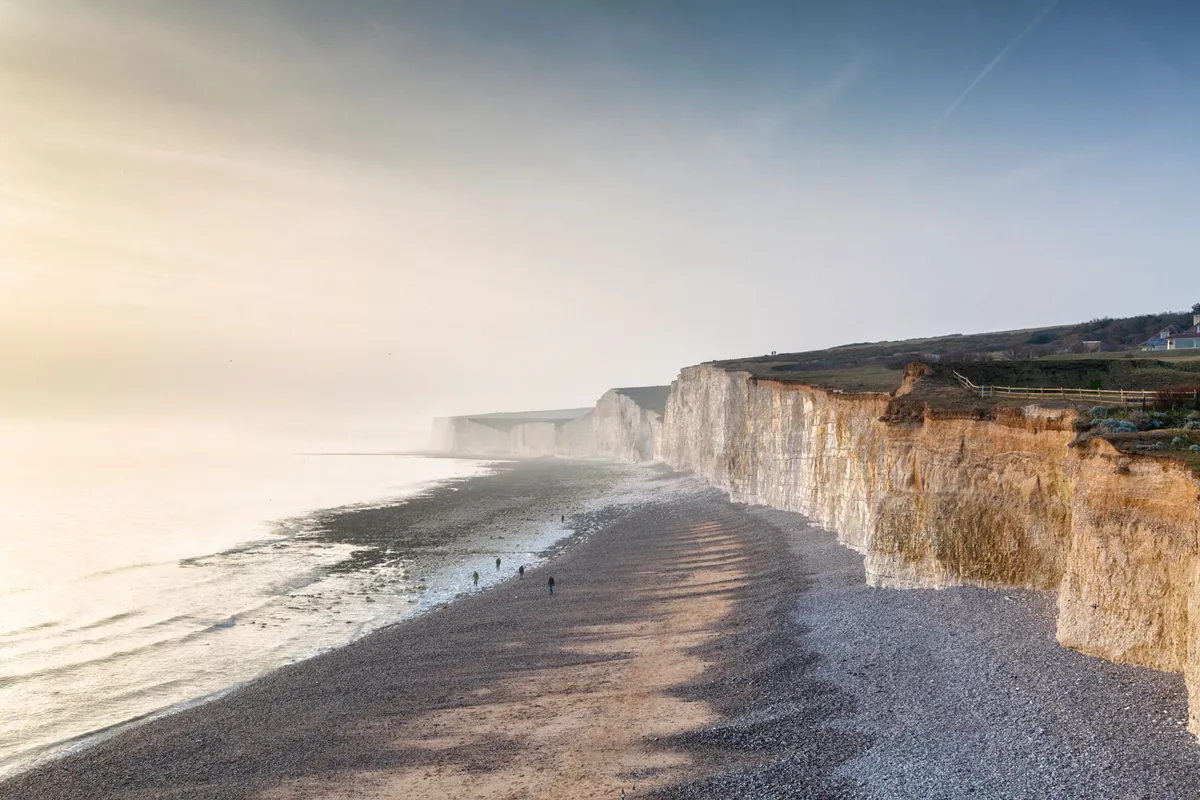
At all times of year the downs, western and eastern, offer some of the most iconic and best-loved views in our islands. You cannot but respond to them. They impress, such that you leave part of your soul behind on leaving, which acts as a touchstone to call you back, for more. Here, the East Sussex downs perhaps outscore their western cousins, for the views from High and Over near Alfriston, and eastward and seaward along the Seven Sisters from Cuckmere Haven, from Birling Gap and Belle Tout, and inland from Windover Hill towards Firle Beacon, are more than breathtaking, they are soul-making. Perhaps we live for such experiences. My own favourites, though, are from the top of Chantry Hill, above Storrington, and Harting Downs, above South Harting. I’m there now.
And in winter, these places offer a solitude seldom experienced during the brighter months when honeypot places become more than full. Winter offers us a one-to-one relationship with wonderful places on these downs.
Above all, the South Downs are a landscape of love – and not merely because many of us yearn to live in one of their picturesque villages. They generate and instil love. As more and more people realise this, perhaps guided by the great estate owners, so the South Downs’ future will be assured.
Now go there: where to walk, stay, dine, muse and more on the South Downs
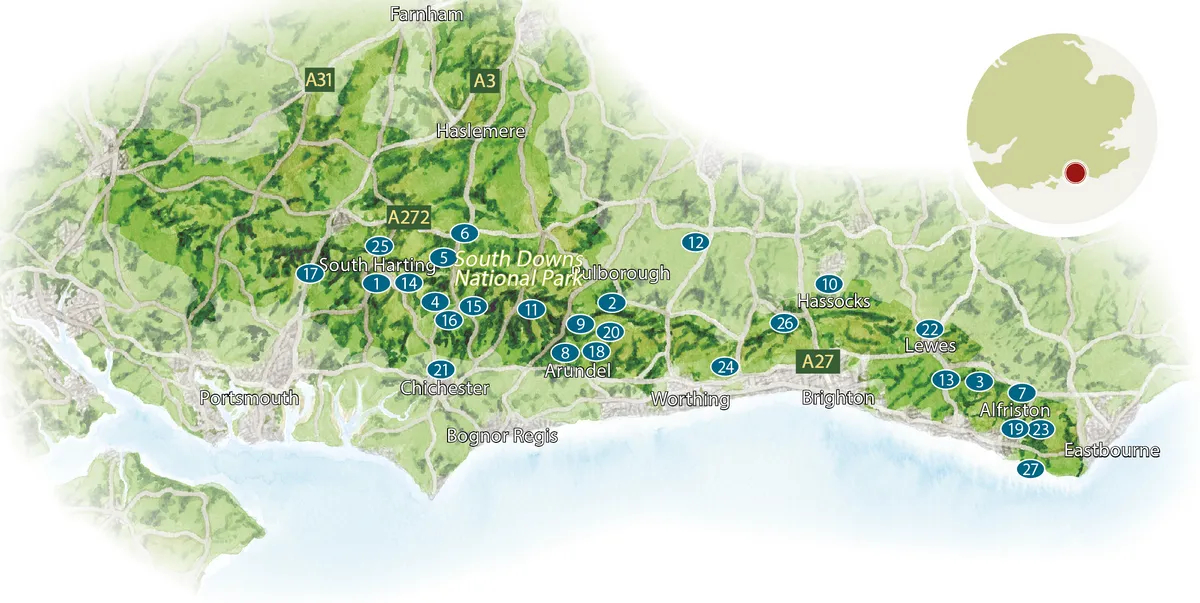
Historic houses to visit in the South Downs

This 18th-century house has commanding views from its position on the South Downs ridge.
A fine Elizabethan country house built in 1577 with pleasure grounds and a walled garden.
This privately owned country house at the heart of the South Downs National Park is open to visitors in the summer months.
4. West Dean Gardens Singleton
Beautiful gardens with Victorian glasshouses and surreal trees.
Places to stay in the South Downs
5. The Park House Hotel, Bepton
A country house hotel with full English afternoon tea and a spa.
6. The Spread Eagle Hotel, Midhurst
Dating to 1430, this former coaching inn has 39 charming bedrooms and a modern spa.
A 19th century colonial-style country house with an excellent restaurant.
A fine country pub with 14 cosy ensuite rooms.
9. South Downs Bunkhouse, Houghton Farm
Set in the Arun Valley, the bunkhouse is open all year.
10. South Downs Lodges, Hassocks
Luxury, dog friendly, self-catering lodges.
11. Gumber Bothy Bunkbarn, Slindon
Open mid-March to October.
12. Knepp Wildland Safaris, Dial Post
Self-pitch and glamping site available from Easter to end of October.
13. YHA South Downs, Southsease
Best pubs and restaurants in the South Downs
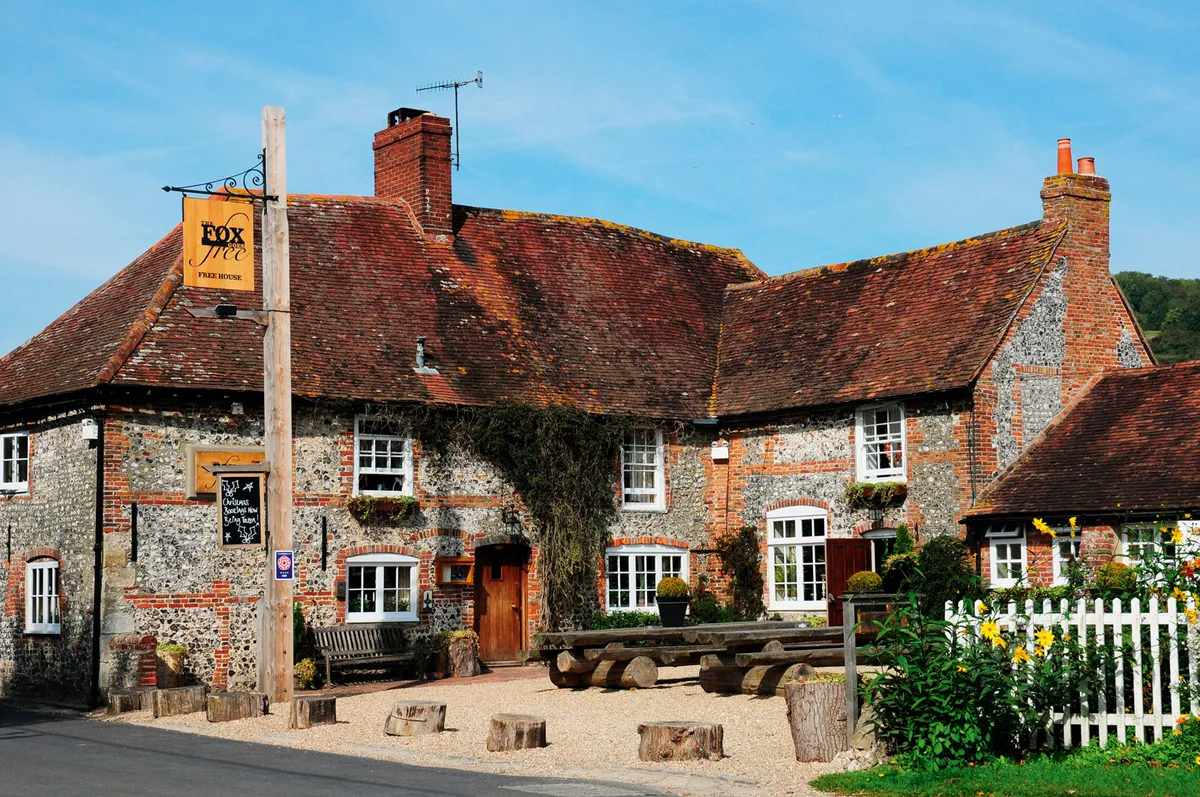
14. Royal Oak, Hooksway
A freehouse in a 16th-century cottage, with lovely log fires and its own ghost.royaloakhooksway.co.uk
15. The Fox Goes Free, Goodwood
Find oak beams and a garden overlooking fields at this knapped-flint inn. thefoxgoesfree.com
18. Butlers, Arundel
An elegant family-run restaurant with fine food and terrace garden. butlersarundel.co.uk
19. Plough & Harrow, Litlington
This superb 17th-century country pub offers real ales and great food made from local produce. ploughandharrowlitlington.co.uk
Museums and heritage sites to visit in the South Downs
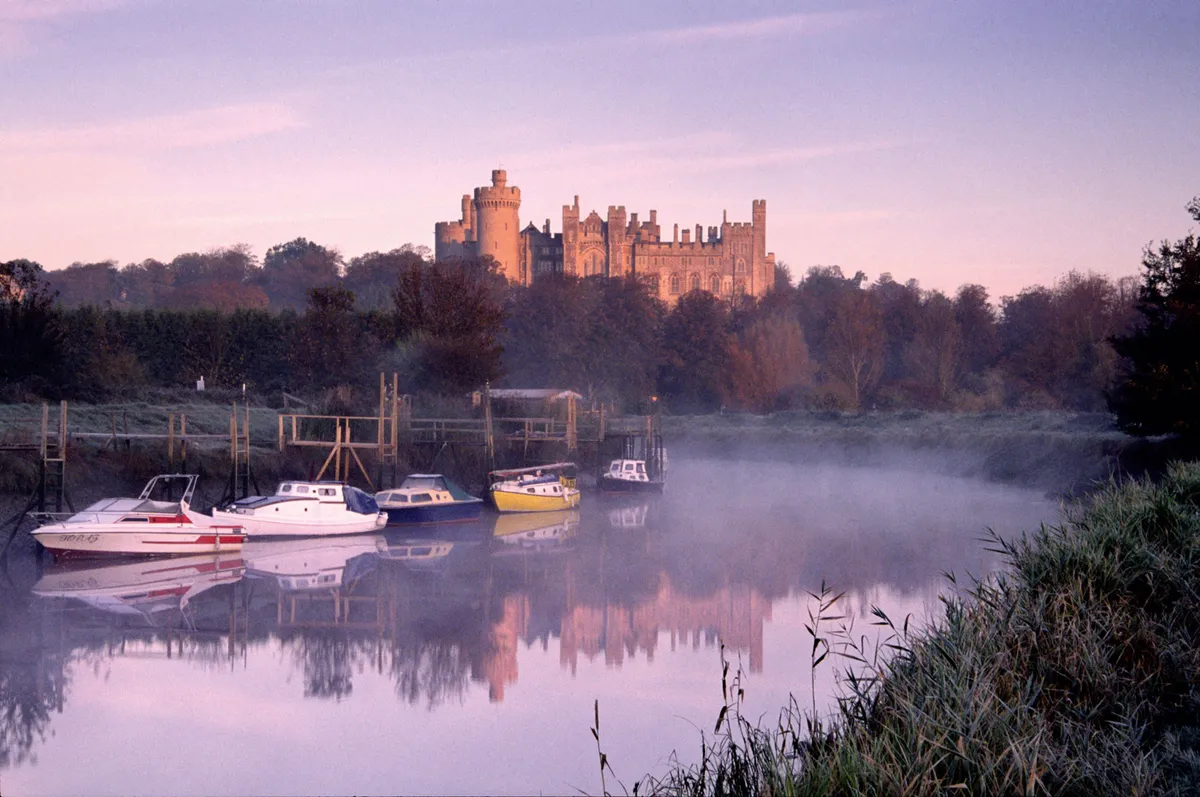
16. Weald and Downland Living Museum, Singleton
Discover 900 years of rural life. wealddown.co.uk
17. Butser Ancient Farm, Chalton
Explore reconstructions of ancient buildings from Stone Age onwards. butserancientfarm.co.uk
20. Arundel Castle, West Sussex
Set high on a hill in West Sussex, this great castle commands the landscape with magnificent views across the South Downs and the River Arun. arundelcastle.org
21. Chichester Cathedral
A longstanding cathedral with a charming fusion of the ancient and the modern. chichestercathedral.org.uk
22. Lewes Castle
Climb to the top of this 1,000-year-old Norman Castle for stunning panoramic views across Sussex.
23. Alfriston Clergy House
A medieval thatched house with a delightful garden. nationaltrust.org.uk/alfriston-clergy-house
24. Lancing College Chapel
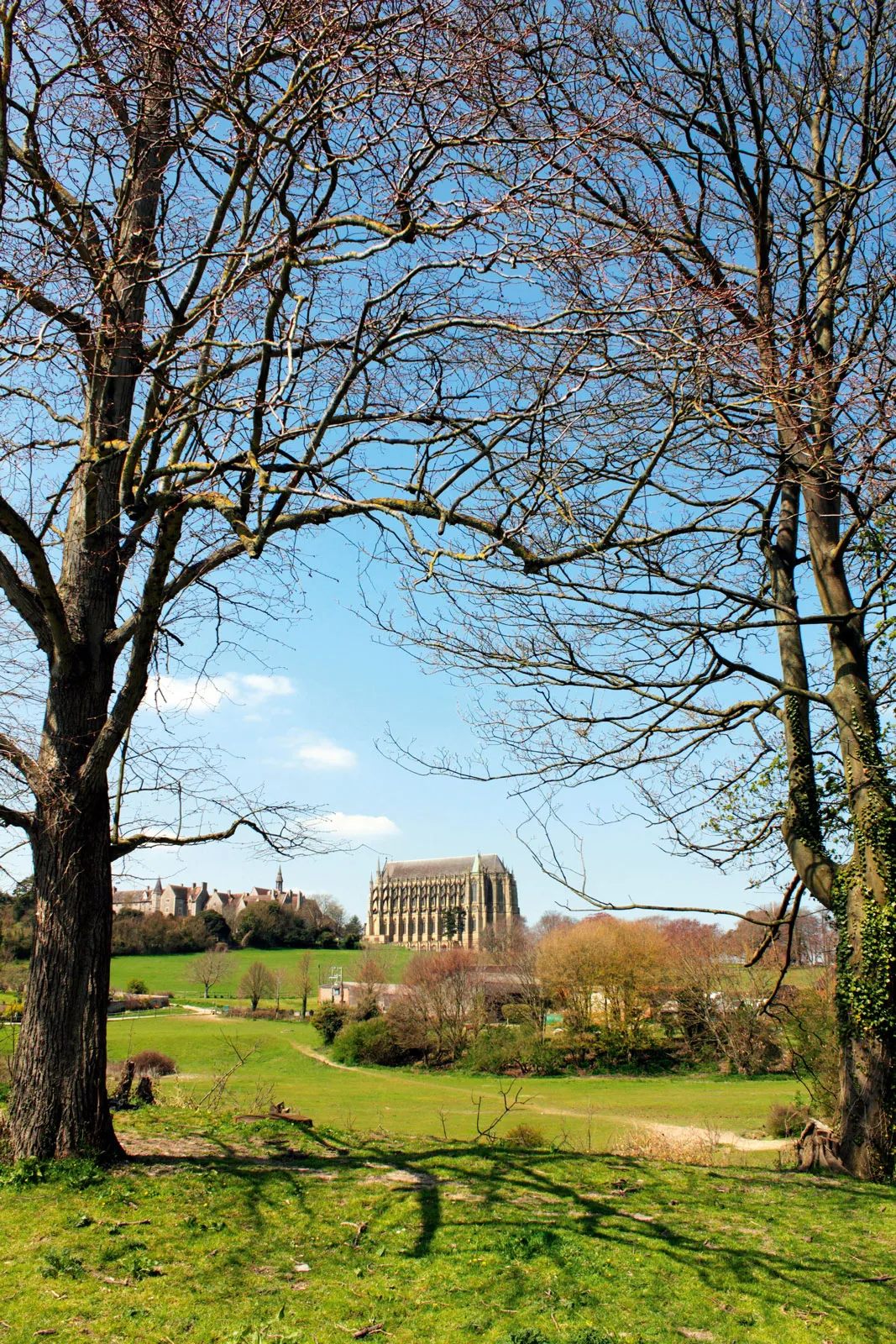
A striking example of Gothic revival architecture, one of the tallest vaulted churches in the UK. lancingcollege.co.uk/chapel
Three winter walks on the South Downs
25. Western Downs: Harting Downs to Treyford Hill
Walk from the NT car park east along South Downs Way to Treyford and Didling Hills, via Beacon Hill and Pen Hill; back via Hooksway, Millpond Bottom, Little Round Down and Whitcombe Bottom. Open access downland.
26. Mid-Downs: Devil’s Dyke
Walk west from Devil’s Dyke car park (where you’ll find a pub and cafe) along the South Downs Way to Truleigh Hill. Return along the lane through Edburton and Fulking (which has a pub), and back up the escarpment. Mainly National Trust.
27. Eastern Downs: Seven Sisters
Go for it! You may get blasted by the wind, but you’ll love it. It’s rather linear, although the downland corridor is surprisingly broad. For a simple route, start at Birling Gap or Friston, head either west or east in the morning and do the other half in the afternoon.
Matthew Oates is an ecologist, author and broadcaster. His books include In Pursuit of Butterflies: A Fifty Year Affair and Beyond Spring: Wanderings Through Nature.
Main image: South Downs in winter/Credit:Sussex Landscape Photography
